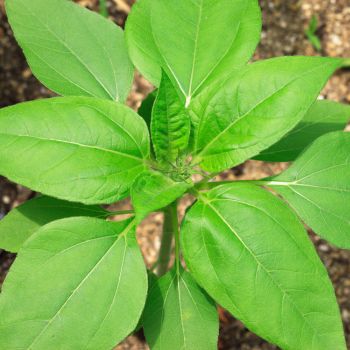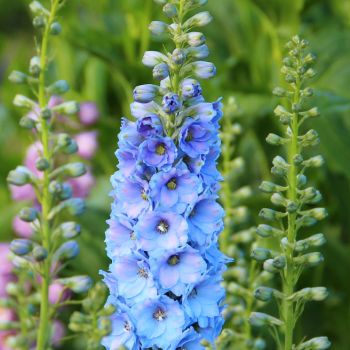It’s no wonder zinnias are such popular flowers. Coming in numerous colours and sizes, the flowers are available in double, semi double and single varieties. The plants are easy to grow from seed, fast to germinate and produce flowers in around 90 days, making them perfect for beginning gardeners through to experienced flower farmers. Treated as a cut and come again crop, zinnias can flower from early summer through to autumn.
Zinnias are frost sensitive annuals that can be sown direct in the garden or raised as seedlings to be transplanted in warm weather. Heat lovers, zinnias should be planted in a position that receives at least 6 hours of direct sun a day. Space dwarf varieties 15cm apart, increasing the space to 30cm for taller growing varieties, with rows 30-45cm apart.
Here are 5 top tips for growing the healthiest zinnias:
1. Grow Strong Seedlings
Zinnias originated in Mexico, and they love hot weather. If you want your zinnia seeds to really take off, wait until the heat of summer before planting. Plant seeds directly in the soil only if it’s warm enough - in cool temperate climates such as Melbourne, that usually means holding off until November or December, though gardeners in warmer climates can plant from the beginning of spring onwards.
If raising seedlings, use jiffy pots or soil pellets to minimise root disturbance when the seedlings are planted out. Zinnias don’t like being transplanted, so take extra care to keep the root ball intact when planting out seedlings.
2. Pinch Young Plants
Pinching zinnias will result in more flowers, longer stems and stronger growth all round. Pinch seedlings when they are around 20cm tall with a minimum of three pairs of true leaves. Using sharp pruners or snips remove the top 8-10cm of growth, just above a set of leaves. This will encourage branching, which will lead to more flowers. It also encourages stronger growth and stems.
3. Avoid Fungal Infections
Zinnias can be prone to a number of fungal infections. Powdery mildew shows up as a white coating to the upper surface of the leaves, while reddish or brown spots are a sign of leaf spot diseases. Don’t water the leaves directly, instead opting for drip irrigation or watering the soil around the plants. Water in the morning so foliage has a chance to dry off before nightfall. Spacing plants as recommended will allow adequate airflow and make it harder for fungal infections to establish and spread.
4. Provide Support
Professional flower farmers grow zinnias through a horticultural netting that supports the stems, encouraging upright growth. While this isn’t an option for home gardeners, zinnia plants will still benefit from some support. For taller varieties, use thin bamboo stakes to support the stems. For shorter varieties, set up a string guide around the entire garden bed to corral the plants and encourage upright growth and tall stems. Don’t plant zinnias in windy locations where they may be in danger of being blown over or of their stems snapping.
5. Encourage More Flowers
Once the plants mature and start to bloom, deadhead or harvest zinnia flowers regularly. If you leave flowers on the plants to be pollinated by bees, they will go to seed and stop producing new flowers. Instead, pick flowers when they are fully open.
By following these simple tips, you can have joyful zinnias blooming in your garden throughout the warmer months of the year.









